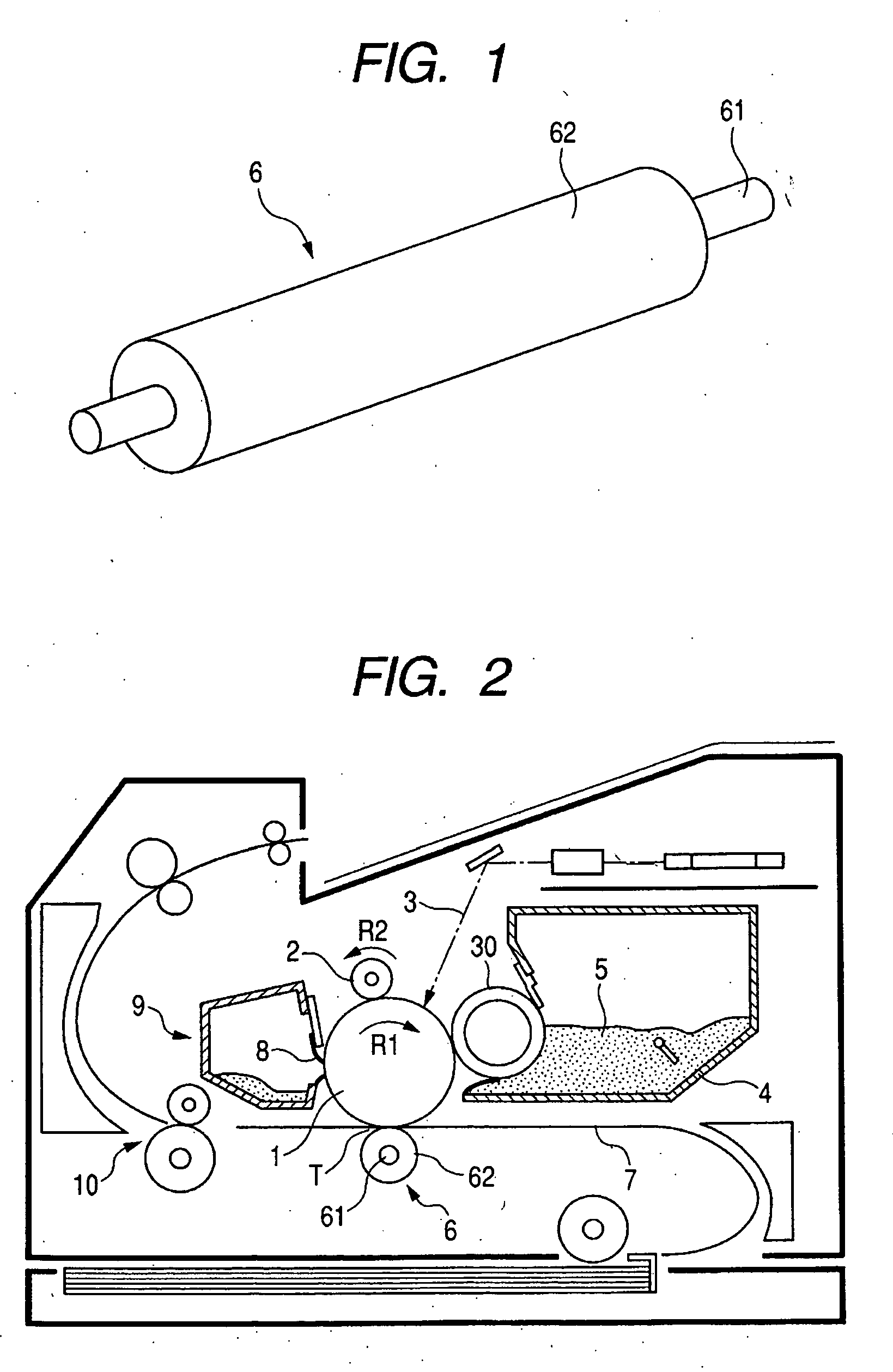Process for producing conductive rubber roller, and roller for electrophotographic apparatus
a technology of conductive rubber and electrophotography, which is applied in the direction of filament/thread forming, textiles and paper, synthetic resin layered products, etc., can solve the problems of unsuitable for producing rollers in a large number, uniform cell foam obtained in the roller foam, and grinding, etc., to achieve uniform resistivity and hardness, small variation in resistivity, and stable hardness
- Summary
- Abstract
- Description
- Claims
- Application Information
AI Technical Summary
Benefits of technology
Problems solved by technology
Method used
Image
Examples
examples 5-1 to 5-5
&, COMPARATIVE EXAMPLES 5-1 TO 5-5
[0164] Conductive rubber rollers (FIG. 1) which demonstrate the present invention were produced in the following way.
[0165] 75 parts by mass of acrylonitrile-butadiene rubber (DN401, trade name, available from Nippon Zeon Co., Ltd.), 10 parts by mass of epichlorohydrin rubber (GECHRON 3106, trade name, available from Nippon Zeon Co., Ltd.), 15 parts by mass of ethylene oxide-propylene oxide-allyl glycidyl ether terpolymer (compositional proportion of propylene oxide: 1.30 mol %; compositional proportion of allyl glycidyl ether: 11.7 mol %; a trial product), 4 parts by mass of azodicarbonamide (VINYFOR AC, trade name, available from Eiwa Chemical Ind. Co., Ltd.), 1 part by mass of stearic acid (LUNAC S20, trade name, available from Kao Corporation), 5 parts by mass of zinc oxide (Zinc White JIS 1, trade name, available from Hakusui Chemical Industries, Ltd.) and 10 parts by mass of carbon (ASAHI 35, trade name, available from Asahi Carbon Co., Ltd.)...
PUM
| Property | Measurement | Unit |
|---|---|---|
| Temperature | aaaaa | aaaaa |
| Temperature | aaaaa | aaaaa |
| Temperature | aaaaa | aaaaa |
Abstract
Description
Claims
Application Information
 Login to View More
Login to View More - R&D
- Intellectual Property
- Life Sciences
- Materials
- Tech Scout
- Unparalleled Data Quality
- Higher Quality Content
- 60% Fewer Hallucinations
Browse by: Latest US Patents, China's latest patents, Technical Efficacy Thesaurus, Application Domain, Technology Topic, Popular Technical Reports.
© 2025 PatSnap. All rights reserved.Legal|Privacy policy|Modern Slavery Act Transparency Statement|Sitemap|About US| Contact US: help@patsnap.com



